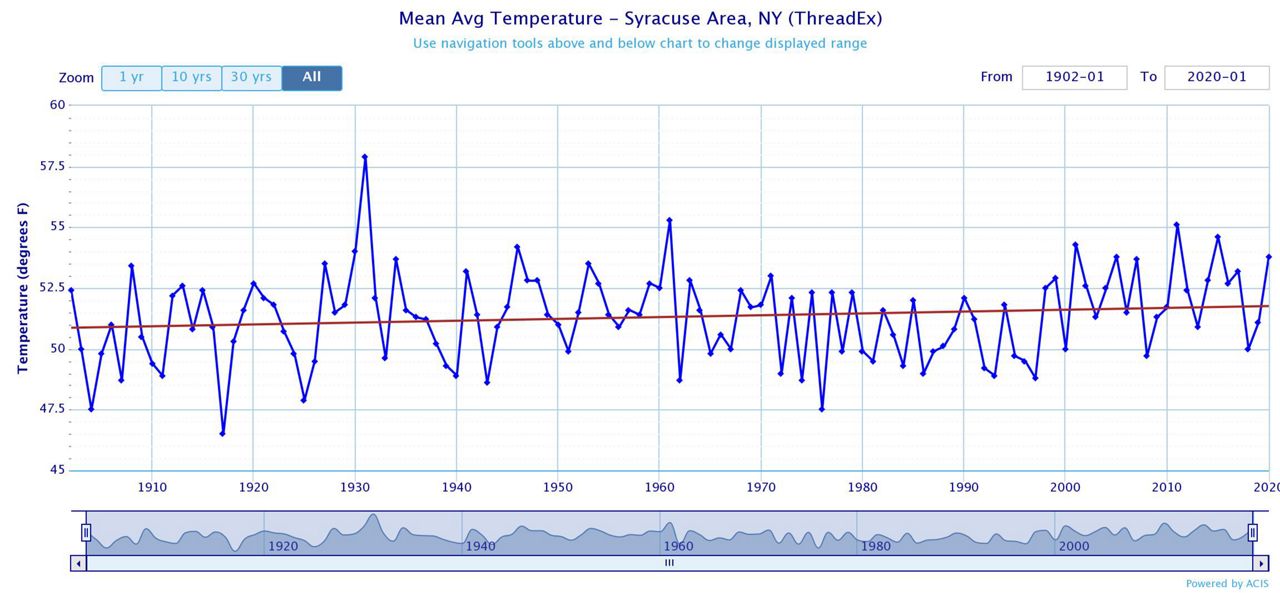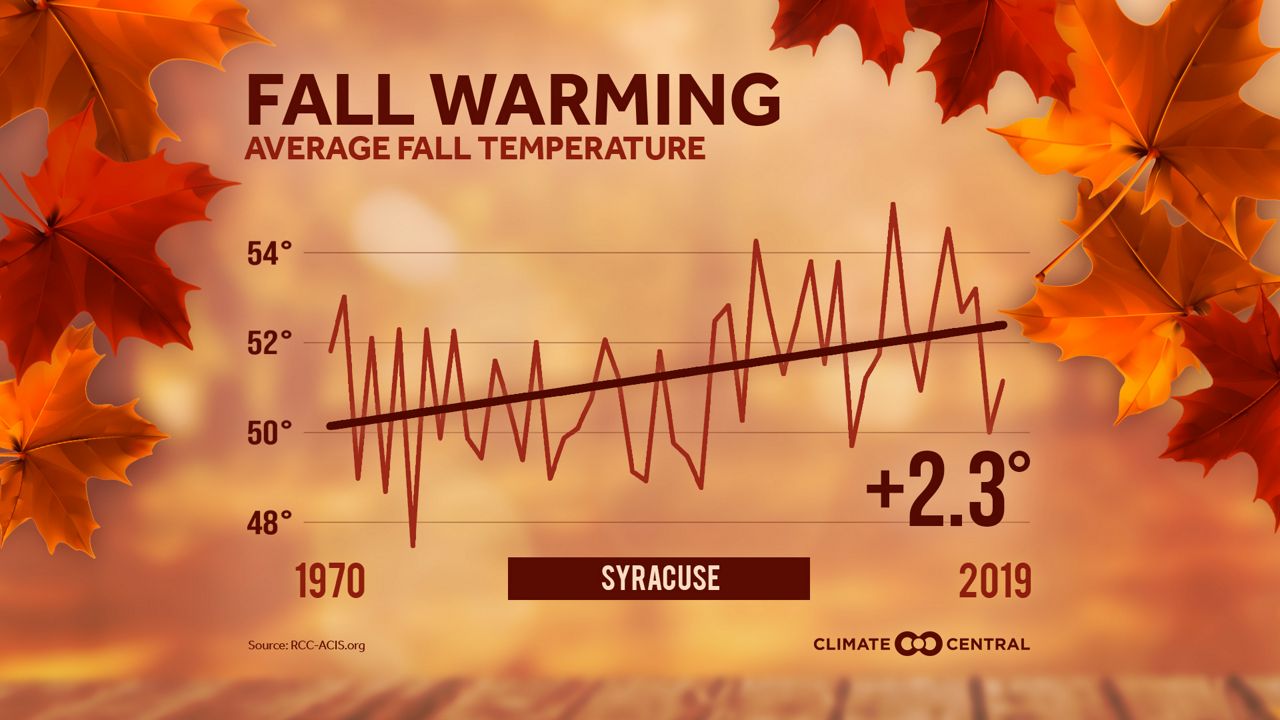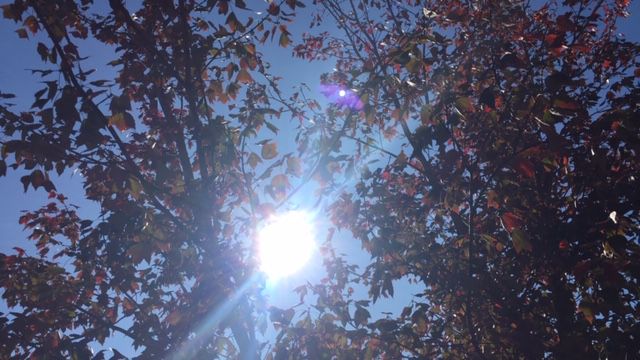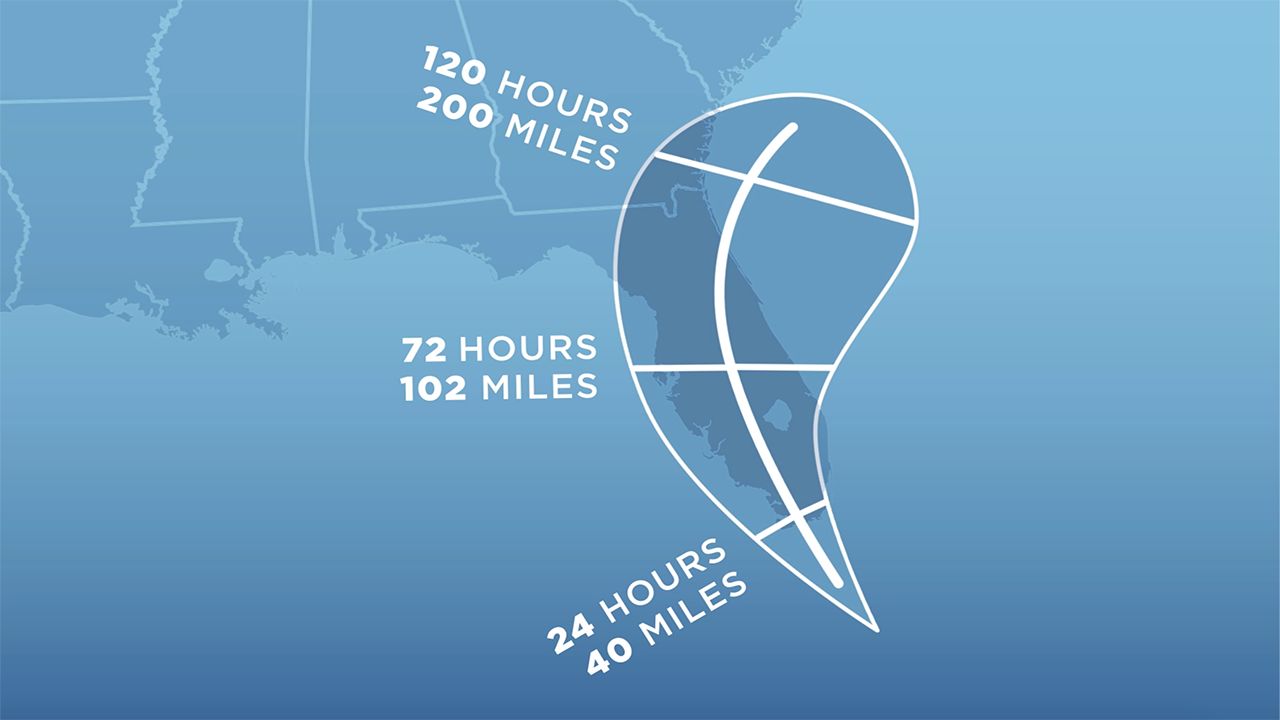After many prolonged stretches of unseasonable warmth this past summer, we kept the warm weather streak going this fall.
When I refer to the fall season, I will be talking about meteorological fall — not to be confused with astronomical fall — which refers to the months of September, October, and November.
Meteorologists divide seasons into three-month increments for statistical purposes. The start of astronomical winter is still several days away.
When looking at fall 2020 in Syracuse, it tied for eighth-warmest on record with an average temperature (combined average of all the highs and lows over the three-month period) of 53.8 degrees. This was also the average fall temperature in 2005.
Six of the ten warmest meteorological falls on record in Syracuse have occurred in the last 20 years, a clear result of climate change.
The average mean fall temperature in the Salt City is 51.1 degrees.
We were still notably below the warmest fall season on record here, though, which was in 1931. The average temperature was 57.9 degrees.
So how did we make our way once again into the top-10 warmest fall seasons?
Similar to how our warm summer went, multi-day stretches of warmer-than-average temperatures made the difference.
Looking back on September’s weather, we had three stretches of 80-degree-or-warmer temperatures, one two-day stretch and two four-day stretches. The warmest of these days was September 9, when the high was a remarkable 88 degrees.
October only brought us two days with highs in the 80s, and two in the 70s, but a majority of the month was spent in the 60s. This, in a month when average highs fall out of the 60s and back into the 50s.
Fast forward to November when we experienced a six-day stretch of highs in the 70s, culminating with a high of 78 on November 10, helping to push us over the average.
So what does all this mean?
We can deduce clear warming trends not only anecdotally, but statistically.
Taking into consideration the entire length of the climate record in Syracuse going back to 1902, the average fall temperature has increased by about 0.9 degrees.

Since just 1970, however, the average fall temperature in Syracuse has risen 2.3 degrees.

Remember the next time we have a day or a stretch of days that are much warmer than normal that it may only last for a short time, but is part of a concerning, larger-scale trend.








